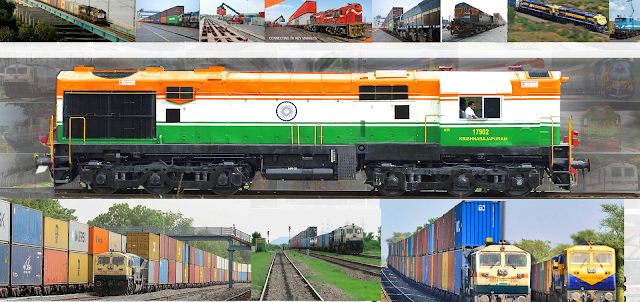Free Trade Zone Locations of
Today’s Global Supply Chains
A free trade zone (FTZ) is
defined as a “specific class of special economic zone. It is a geographic area
where goods may be landed, stored, handled, manufactured, or reconfigured, and
re-exported under specific customs regulation and generally not subject to
customs duty”. Designed to stimulate economic growth, FTZs are often found
throughout the world and around major seaports, international airports, and
other locations with strong transportation ties.
Shifts in trade are placing an
emphasis on such geographies as India, Singapore, UAE and Africa. Indian
government plans to open a special economic zone at its largest port, JNPT. Despite
the bright outlook for Africa, risks remain and the need for infrastructure
investment is great.
While most of the focus has been
on Europe and the US, drivers of global economic trade since World War II, a
shift in trade is occurring as domestic spending power expands in such emerging
markets as Africa, Dubai, India and Singapore.
India
India was one of the first in Asia to recognize the effectiveness of the Export Processing Zone (EPZ) model in promoting exports, with Asia's first EPZ set up in Kandla in 1965. With a view to overcome the shortcomings experienced on account of the multiplicity of controls and clearances; absence of world-class infrastructure, and an unstable fiscal regime and with a view to attract larger foreign investments in India, the Special Economic Zones (SEZs) Policy was announced in April 2000.
India has had its ups and downs with
using these zones to stimulate economic growth due to government bureaucracy,
poor infrastructure and the lack of foreign investment. However, through the
years, the government has worked to improve these zones by cutting government
red tape as well as investing in infrastructure.
In late 2015, the government
announced development plans for a special economic zone at Jawaharlal Nehru
Port Trust (JNPT), the country’s largest container handler. JNPT accounts for
60% of the total container cargo moving via India’s twelve major public ports
and about 40% of the nation’s overall containerized ocean trade.
Singapore
Often viewed as a gateway into
Asia as well as its financial center, Singapore continues to serve in not only
these roles but also as a gateway for the AESAN Economic Community. The
Community which is a collection of Southeast Asian countries including
Malaysia, Indonesia, Thailand and Vietnam, is investing heavily in infrastructure
projects to link each country in a seamless manner as well as to meet growing
domestic needs of its rising middle classes.
Singapore is generally a free
port and an open economy. More than 99% of all imports into Singapore enter the
country duty-free. Singapore has three Free Trade Zone (FTZ) authorities, PSA
Corporation Ltd, Jurong Port Pte Ltd and the Changi Airport Group (Singapore)
Pte Ltd. and nine free trade zones.
UAE
Located along the Persian Gulf
within the Middle East, the UAE has benefited from global trade as a
transshipment location between Asia and Europe. In addition, as the region
lessens its dependence on oil exports, it is encouraging diversification into
other industries such as pharmaceuticals and telecommunications.
Among the free trade zones
available in the UAE is Jebel Ali, one of the largest such entities in the
world. Established in 1985, Jebel Ali is home to about 7000 companies from 150
countries around the world. The port is situated between Jebel Ali Port, Dubai,
a global top 10 container port and Al Maktoum International Airport, described
as “the world’s largest cargo airport”.
Africa
The “Sleeping Giant” is awakening
and as such many infrastructure projects are underway. Despite the many risks –
political, economic and natural – the interest in this continent is real as
foreign investors such as General Motors, Procter & Gamble and Roche
Holding expand operations to the continent. Indeed, Africa is seen not only as
an outsourcing location but also one with great promise for its rising middle
class. According to the African Development Bank, Africa now has the
fastest-growing middle class in the world. Some 313 million people, 34% of
Africa’s population, spend USD 2.20 a day, a 100% rise in less than 20 years
(Note: The bank’s definition of middle class in Africa is people who spend the
equivalent of USD 2 to USD 20 a day).

As interest in Africa grows, so
too does the need for free trade zones as a means to attract investors. With
financial assistance from China, Djibouti has begun construction of what has
been described as Africa’s largest free trade zone. The agreement was signed in
early 2016 as an initiative to stretch its “One Belt, One Road” strategy into
Africa. The free trade zone will be 48 square kilometers and according to the
agreement, the zone is expected to handle $7 billion in trade within two years.
In addition, Djibouti will create a unified customs system with China,
establish a transit trade center and set up a currency clearing system.
What’s Next?
As the focal point of global
trade shifts away from Europe and US in favor of Southeast Asia, India, Middle
East and Africa, the need for free trade zones will only grow further to
support the growth. In addition, the need for logistics and transportation
providers will also grow and with this growth, the need for technology and
automation will be great to maintain efficient operations.













